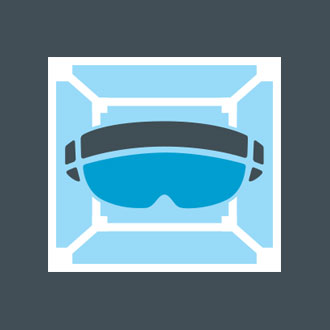HoloLens is finally here. Development kits have shipped and Cramer is one of the first agencies to test out the groundbreaking new AR tech.
"Greg stands up from his seat and takes a step forward. "Oh, I have to get up and walk around? That's kind of cool."
An immediate difference from the likes of Oculus and virtual reality, Hololens allows and encourages you to make the most of your physical surroundings while still transforming the way you see the world and how you interact with it.
Joseph Lovett, Director of Strategic Planning, walks by remarking, "you know you're looking at a wall?"
Greg, "No I'm not, I'm looking at an energy box!"
"The difference between sane and insane is about to get a lot harder to distinguish…" says Joe.
Greg is deep in the throws of the high-tech crime thriller, Fragments, where as the game's detective, his memory is put to the test.
After spending some time with the HoloLens, Greg Jones, a Cramer strategist, one of Boston's leading event technologists, and the mind behind the Event Technology Landscape unravels his reactions and predictions for this exciting new tech.
Initial reactions:
The form factor is compelling, but the field of view at the moment is limited. There is amazing potential when this, down the road, scales from an awkward three-pound headset, to a normal pair of glasses, and with it, the augmented frame of view scales to a more peripheral experience than the currently confined tv-like screen in front of you.
It is interesting what the technology is doing in regards to spatial mapping, transforming the room you're in, into whatever you need or want it to be. Your workspace, your play space, whatever. A small NYC studio apartment just got a lot bigger! One blank wall provides space for a home office, in-home theater, art studio, and endless other options for either fun or function.
The really compelling part is going to be the next step, with holo-portation.
The real benefit in something like HoloLens will fully actualize when there are cameras in the room that can capture what you look like, and then can overlay that into someone else's HoloLens. The ability to basically transport yourself anywhere will be a powerful feature, for business meetings, for conference speakers, and for Grandmas everywhere.
It's going to change the way we communicate, work with, and meet with one another.
Challenges:
In it's current form, HoloLens is a bit distracting. The gestures and voice commands specifically are a little intrusive or awkward when you're in a group of a people. While a lot of people believed virtual reality would be the solo, closed-off experience, and augmented reality had the potential to counter that, it still seems to be isolating, as others still can't see what you're seeing and share in your experience.
If the idea is for people to interact with one another, HoloLens may be only half of the equation.
This is a great consumer AR device, but it's not quite ready for two-way interaction. You would really still need to outfit a room with holo-portation, motion-capture cameras.
Also in its current form, it is somewhat difficult to perform common tasks. The virtual keyboard is very slow, and the Cortana voice commands are limited. But there is huge opportunity here for further development of the user interface. The more you can do by just looking at something and saying a simple command, the more powerful the device will become.
In terms of Experiential Marketing:
This is really the first time when you can hand someone a device, and launch an application, allowing them to explore a space that you've created, and uncover a virtual layer of information that exists on top of the physical space.
For instance, in a museum setting, if HoloLens understands the exhibit you're looking at, it can provide ancillary information as an AR layer. It can even put a path on the floor to make sure you don't get lost in the Louvre!
And for events, facility branding and mapping the attendee journey just got elevated to new heights. Personalization is going to be an exciting use of the HoloLens.
Ending thoughts:
One of the most compelling things here is that for the last 20-30 years we've had the concept of the personal computer that you sit down at to do your work. Then with smart phones, your computer could go anywhere with you and fit in your pocket.
And now we see the potential for the next generation of this evolution in HoloLens. Where all of the digital information that is important to you is actually all around you. Where all you need to do is ask a simple question, and you could be delivered the answer. No need to pull anything out of your pocket or launch an app.
While Cortana is limited at the moment, building an interface like IBM Watson into the HoloLens could really change the game. If you no longer had to Google something, but instead you just ask your AI personal assistant and the answer is simply displayed to you. It could really change how the world learns and shares information.
One More Thing:
It's really easy to create augmented waste. You unfortunately will have to spend time cleaning your augmented room so to speak.
Greg is currently walking around the office closing out of windows that were pinned in the past and not needed in the moment. That giant T-Rex in the hallway though? That can stay.


